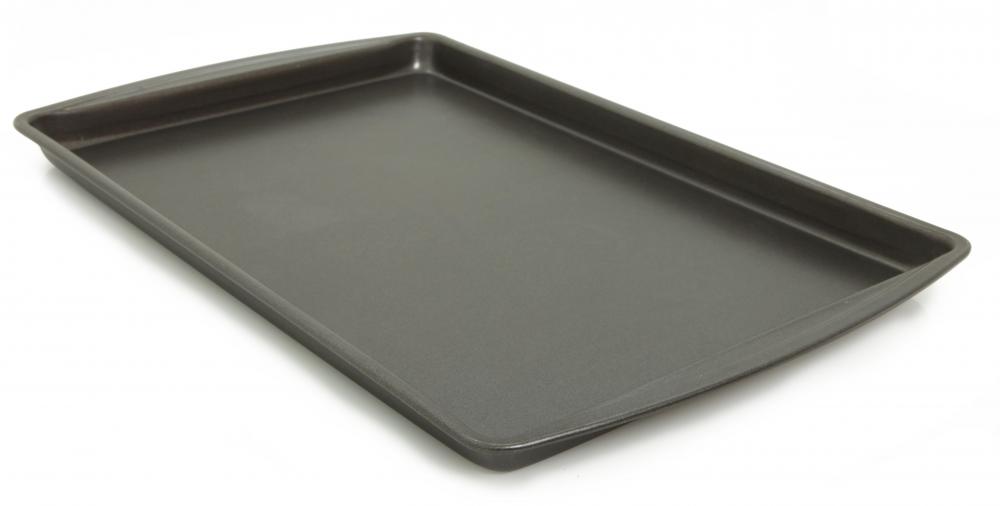At WiseGEEK, we're committed to delivering accurate, trustworthy information. Our expert-authored content is rigorously fact-checked and sourced from credible authorities. Discover how we uphold the highest standards in providing you with reliable knowledge.
What are the Different Types of Jelly Roll Pans?
Jelly rolls pans are typically differentiated by their composition and finish. The dimensions of jelly roll pans are generally standardized at 15 - 17 inches (38.1 - 43.18 cm) long, 10 - 14 inches (25.4 - 35.56 cm) wide, and one inch (2.54 cm) deep. Constructed of stainless steel, aluminum, or a combination, these pans are usually available with varied finishes.
Stainless steel jelly roll pans are considered a good, but not perfect, pan — at least not for flawless jelly rolls. The reason that the plain stainless steel pan is not ideal is because the fluffy cake may stick to the surface, causing it to tear during removal. Stainless steel pans with an aluminum surface are less prone to sticking, and are a much better choice.

Stainless steel is good, however, for distributing heat evenly to ensure uniform baking, and is heavier, so it may last longer. Parchment paper is often used to line the bottoms of stainless steel jelly roll pans, to ensure easy removal of the contents. Bakers usually grease the pans with butter, oil, or shortening and then cover with parchment or waxed paper. This helps the finished cakes to come out of the pan cleanly and easily.

Some jelly roll pans have a dark non-stick coating. While this coating is effective for the prevention of sticking, the dark surface may cause the cake to brown excessively. When using a pan with a dark non-stick surface, users should monitor the baking carefully to prevent over-browning. It is important to use plastic utensils with these pans, as metal may scratch the surface.
Jelly rolls are generally made from sponge cake because it tends to be very light and flexible. The batter is poured into prepared jelly roll pans, which are usually greased and lined with parchment paper for best results. The pans should not be filled more than halfway to prevent overflow during baking.
When removed from the oven, this cake is immediately removed from the pan onto a towel covered in confectioner’s sugar. The parchment paper, if used, is removed, and the hot cake may be carefully rolled with the towel from the narrow end. The rolled cake is placed on a wire rack until cool.
When the cake is cool, it is unrolled and the towel is removed. Any jelly used is typically whisked gently to soften it before it is spread over the cake. Other fillings, such as chocolate cream or whipped cream with fruit may also be used. After the filling is spread over the entire cake, to the edges, it is carefully rolled up and sprinkled with confectioner’s sugar before serving.
AS FEATURED ON:
AS FEATURED ON:












Discussion Comments
@widget2010, non-stick spray unfortunately can't fix everything. I know many accomplished bakers who won't use it for anything other than cookie sheets.
I have had the same problem in the past with stainless steel when trying to bake muffins; I worked at a coffee shop for one summer, and we made our muffins out of a mix, scooped into muffin pans. Even when I applied plenty of non-stick spray to the pans, the dough still stuck to it, maybe once every dozen muffins or so; if I didn't use enough, it would be several per dozen. Baking in stainless steel is definitely not a good idea, in my opinion.
This example with jelly roll pans shows that stainless steel pans are not always the best; sometimes, more old-fashioned aluminum pans have something to offer in cooking that stainless steel does not, or vice versa.
Post your comments